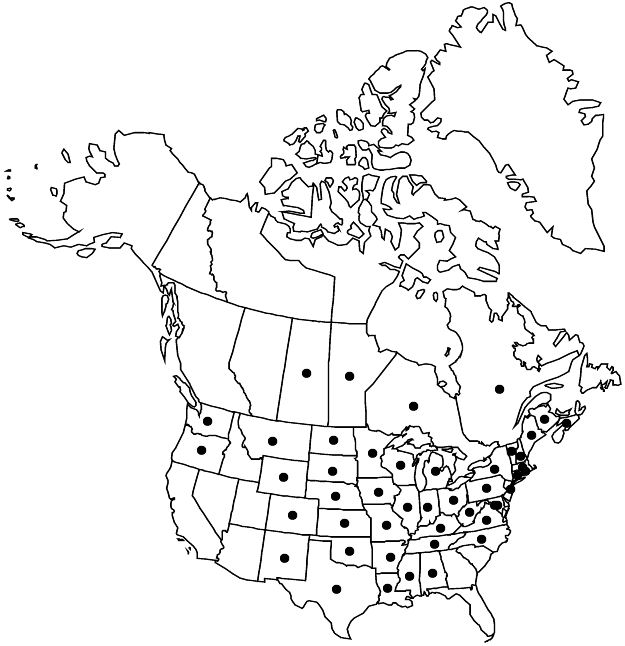Difference between revisions of "Vitis riparia"
Fl. Bor.-Amer. 2: 231. 1803.
FNA>Volume Importer |
FNA>Volume Importer |
(No difference)
| |
Revision as of 18:20, 24 September 2019
Plants usually moderate to high climbing, sometimes sprawling, sparsely branched. Branches: bark exfoliating in shreds; nodal diaphragms to 0.5 mm thick; branchlets terete, glabrous or sparsely hirtellous, growing tips enveloped by unfolding leaves, glabrous or sparsely hairy; tendrils along length of branchlets, persistent, branched, tendrils (or inflorescences) at only 2 consecutive nodes; nodes not red-banded. Leaves: stipules 3–5 mm; petiole 1/2 to ± equaling blade; blade cordate, 6–20 cm, 3-shouldered to shallowly 3-lobed, apex short acuminate, abaxial surface not glaucous, glabrate, visible through hairs, veins and vein axils hirtellous, adaxial surface glabrous. Inflorescences (4–)9–12 cm. Flowers functionally unisexual. Berries black, heavily glaucous, globose, 8–12 mm diam., skin separating from pulp; lenticels absent. 2n = 38.
Phenology: Flowering Apr–Jun; fruiting Aug–Sep.
Habitat: Stream and riverbanks, pond margins, alluvial woodlands, ravines, thickets, roadsides, fencerows.
Elevation: 0–2200 m.
Distribution

Man., N.B., N.S., Ont., Que., Sask., Ala., Ark., Colo., Conn., D.C., Ill., Ind., Iowa, Kans., Ky., La., Maine, Md., Mass., Mich., Minn., Miss., Mo., Mont., Nebr., N.H., N.J., N.Mex., N.Y., N.C., N.Dak., Ohio, Okla., Oreg., Pa., R.I., S.Dak., Tenn., Tex., Vt., Va., Wash., W.Va., Wis., Wyo.
Discussion
Vitis riparia is native throughout much of its range. It has become naturalized in a few locations in Saskatchewan, Oregon, and Washington. Plants on dunes around the Great Lakes with hairier petioles and leaf blades sometimes have been recognized as var. syrticola; variation in hairiness is essentially continuous, however, and the form is not worthy of taxonomic recognition (P. M. Catling and G. Mitrow 2005).
Selected References
None.